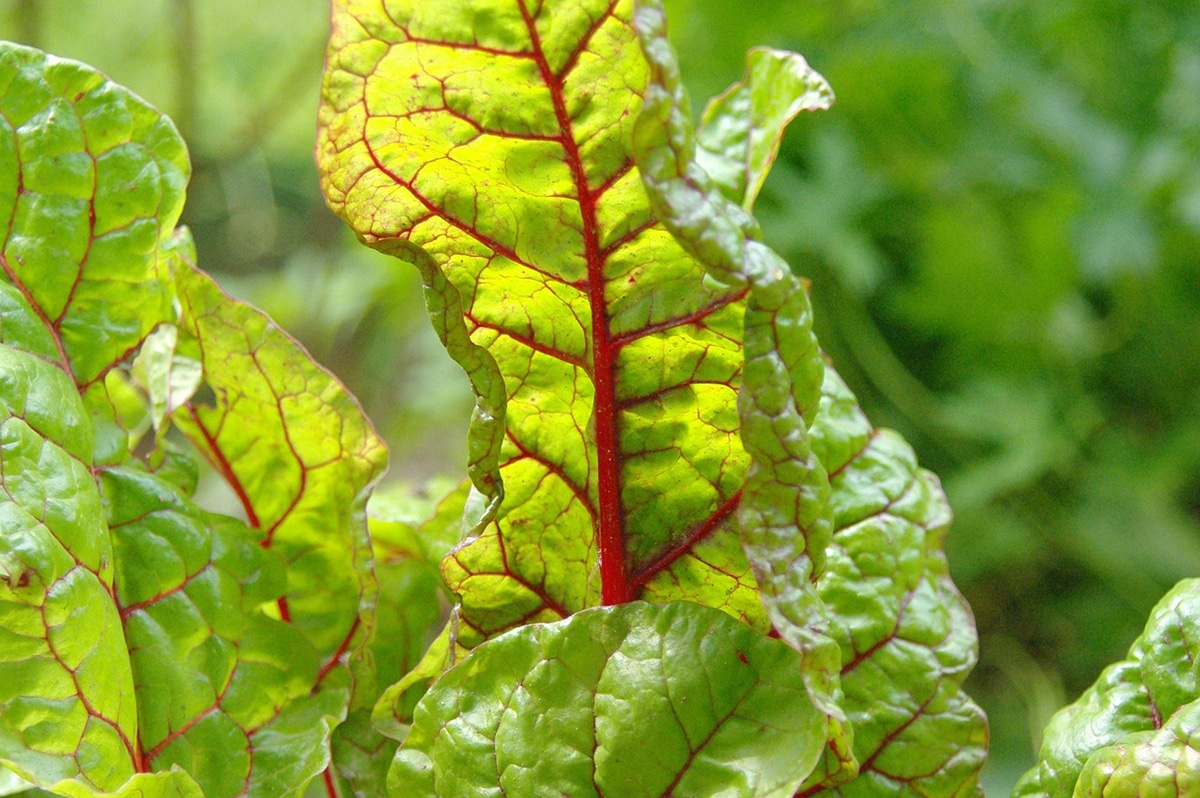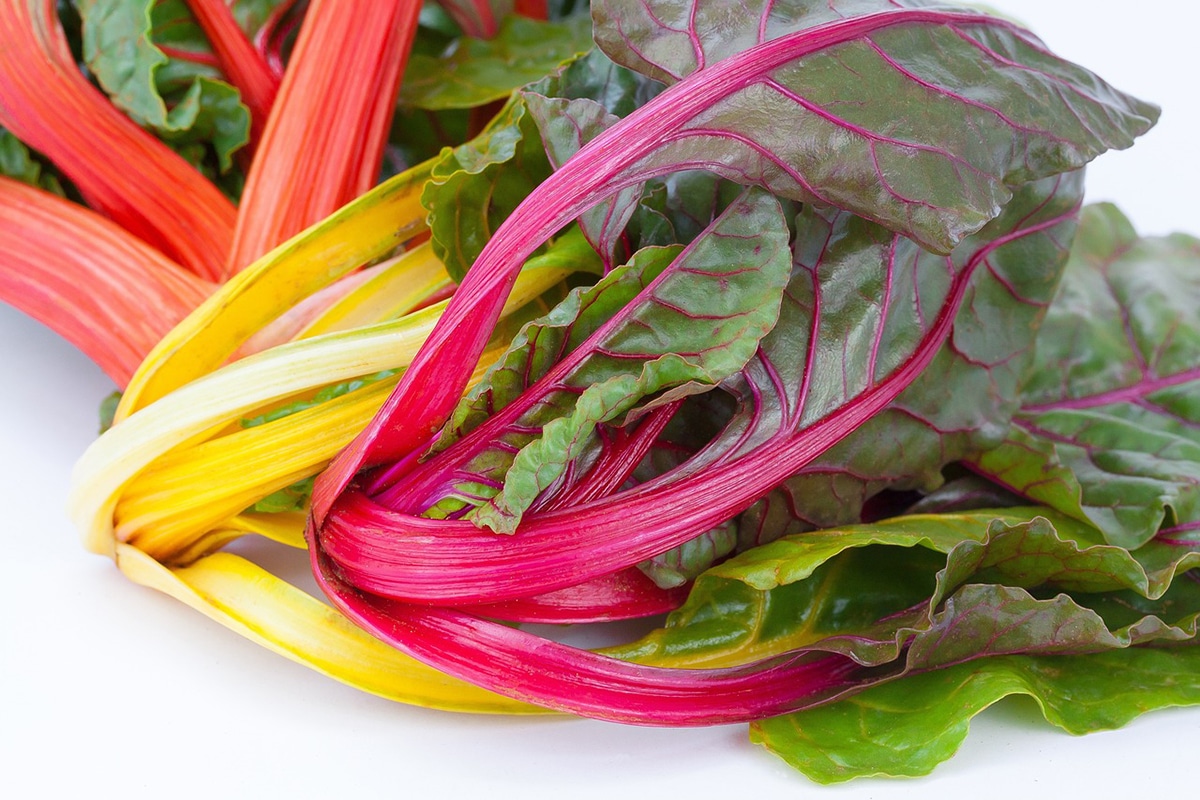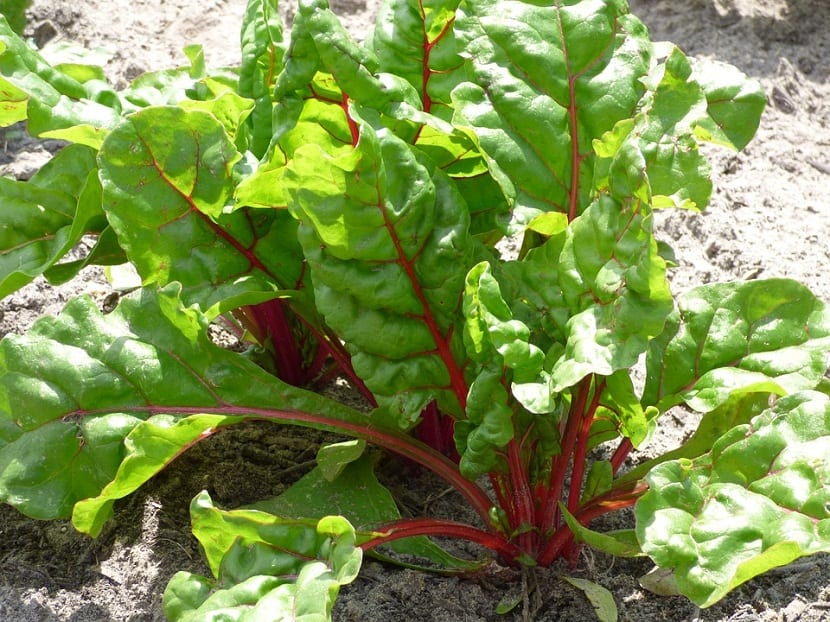
Red chard is a popular variety that stands out for its striking color and its nutritional properties. This vegetable is rich in essential nutrients such as vitamins, minerals, and antioxidants, making it a great option to add to a healthy diet. In addition, its mild and slightly bitter flavor makes it versatile in the kitchen, since it can be prepared in various ways.
To get an idea of how good this vegetable is, we will discuss in this article the characteristics and benefits of red chard, as well as some cooking tips. If you want to find out how this vegetable can be a great addition to your diet and lifestyle, keep reading.
What are red chard?

Red chard is a variety of Swiss chard (Beta vulgaris) that are characterized by having deep red leaves. They are a rich source of nutrients, including vitamins A, C, K and antioxidants. In addition, red chard is low in calories and contains dietary fiber, which makes it an excellent option to complement a healthy diet.
Regarding the physical aspect, the red chard has an appearance similar to other varieties of chard, but it is differentiated by its color. The leaves of the red chard are large and broad, with a mild and slightly bitter flavor. Leaf veins are thick and fleshy, and can be pale pink to deep red. Red chard also produces long, thin stems that are edible. These stems taste similar to the leaves, but are crunchier and slightly sweeter.
In general, red chard is a visually striking vegetable that it can add color and flavor to any dish. It is versatile in the kitchen and is an excellent option for a healthy and balanced diet.
How should chard be eaten?
Now that we know what red chard is, how can we eat it? Well, this vegetable can be consumed raw in salads or cooked as a garnish or in main dishes. The most common way to prepare it is by steaming it or sautéing it with olive oil and garlic. The leaves and stems of these vegetables are edible and can be used in various culinary recipes. Here are some tips on how to eat Swiss chard:
- Selection and storage: When buying Swiss chard, be sure to choose fresh, tender leaves without bruises or brown spots. To store, wrap the chard in damp kitchen paper and store in the refrigerator for up to three days.
- Preparation: Before cooking, rinse the chard leaves and stems under cold water to remove any dirt or grit. Trim the stems from the leaves and cut them into evenly sized pieces, as the stems may take longer to cook than the leaves.
- Kitchen: Swiss chard can be cooked in a variety of ways, such as steamed, sautéed with olive oil and garlic, or even in soups and stews. Cook the leaves and stems for about 5-7 minutes until they are tender. Avoid overcooking Swiss chard as this can reduce its nutritional value.
- Combine: Swiss chard is very versatile in the kitchen and can be combined with other foods such as feta cheese, tomatoes, onions and olives. They can also be added to salads, tortillas, pastas, rice dishes, soups, and stews.
Swiss chard can be a healthy and delicious addition to a balanced diet. Be sure to wash them properly before cooking, and experiment with different ways of preparing and combining them to find the way you like best.
What properties does red chard have?

Red chard, like other varieties of chard, is a nutritious and healthy food thanks to its multiple beneficial properties. Let's see what they are:
- Nutrition: Red chard is rich in important nutrients for health, such as vitamin A, vitamin C, vitamin K, iron, calcium, magnesium, potassium, and fiber.
- Antioxidant: Red chard contains a variety of antioxidants, including beta-carotene and other carotenoids, which help protect the body against cell damage and inflammation.
- Bone health: The high calcium content in red chard may be beneficial for bone health, which may reduce the risk of osteoporosis and other conditions related to bone loss.
- Cardiovascular health: Red chard is rich in potassium, which can help maintain healthy blood pressure and reduce the risk of cardiovascular disease.
- Digestion: The fiber in red chard can help maintain a healthy digestive system and prevent constipation.
- Eye health: Red chard is rich in lutein and zeaxanthin, two antioxidants that have been shown to protect eye health and reduce the risk of age-related eye diseases such as macular degeneration.

Nutritional values of red chard
We already know a little more about red chard and its properties. We have also discussed how to prepare it for consumption. We only have to highlight one detail that people look at more and more when they choose food: nutritional values. Each 100 grams of this raw vegetable contains the following:
- Calories: 19
- Proteins: 1,8 g
- Fat: 0,2 g
- Carbohydrates: 3,7 g
- Fiber: 2,1 g
- Sugars: 1,1 g
- Vitamin A: 268% of the recommended daily intake
- Vitamin C: 40% of the recommended daily intake
- Vitamin K: 716% of the recommended daily intake
- Calcium: 10% of the recommended daily intake
- Iron: 8% of the recommended daily intake
- Potassium: 7% of the recommended daily intake
As we can see, Red chard is a highly nutritious vegetable that is rich in vitamins, minerals, and antioxidants. It is particularly rich in vitamin A and K, which is beneficial for eye, skin and bone health. Plus, its high fiber content can help improve digestion and reduce the risk of chronic diseases like diabetes and heart disease.
Without a doubt, this vegetable should not be missing from our diet. Prepared properly it is delicious as a companion to any dish. And how do you like red chard?